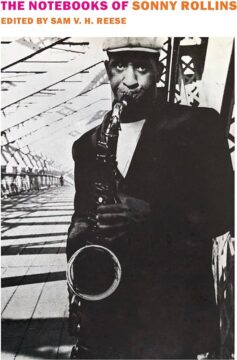Dwight Garner at the New York Times:
 It is possible to imagine the jazz musician Sonny Rollins’s life as a novel, pitched between realism and surrealism in the manner of Ralph Ellison’s “Invisible Man.” The settings would include Harlem, where Rollins grew up poor in the 1930s and ’40s, and the decadence of clubland in New York City and Chicago at the century’s midpoint, when he was a musical prodigy. A chapter might linger on the recording of his landmark 1957 album “Saxophone Colossus.”
It is possible to imagine the jazz musician Sonny Rollins’s life as a novel, pitched between realism and surrealism in the manner of Ralph Ellison’s “Invisible Man.” The settings would include Harlem, where Rollins grew up poor in the 1930s and ’40s, and the decadence of clubland in New York City and Chicago at the century’s midpoint, when he was a musical prodigy. A chapter might linger on the recording of his landmark 1957 album “Saxophone Colossus.”
He began to practice alone, often at night, on the Williamsburg Bridge. A novelist might view this scene from avian heights, swooping down the East River, in and out of his grainy, Dopplered wail. As Rollins aged, accolades began to settle on his head and shoulders the way pigeons do on statues in the Piazza San Marco in Venice. Fame and honor were not enough to assuage his fears when he and his wife bought a house in upstate New York; a Black man and a white woman couldn’t live anywhere too isolated because interracial marriage still drew outrage.
more here.
